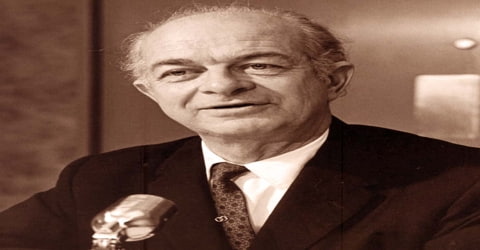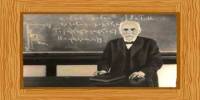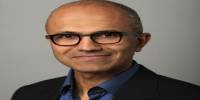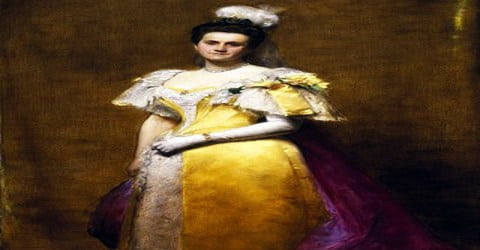Biography of Linus Pauling
Linus Pauling – American chemist, biochemist, peace activist, author, and educator.
Name: Linus Carl Pauling
Date of Birth: February 28, 1901
Place of Birth: Portland, Oregon, United States
Date of Death: August 19, 1994 (aged 93)
Place of Death: Big Sur, California, United States
Occupation: Chemist
Father: Herman Henry William Pauling
Mother: Lucy Isabelle
Spouse/Ex: Ava Helen Pauling (m. 1923-1981)
Children: Linus Carl Pauling Jr., Edward Crellin Pauling, Peter Jeffress Pauling, Linda Helen
Early Life

An American theoretical physical chemist who became the only person to have won two unshared Nobel Prizes, Linus Pauling was born on February 28, 1901, in Portland, Oregon, U.S. the first-born child of Herman Henry William Pauling (1876-1910) and Lucy Isabelle “Belle” Darling (1881-1926). He was a founder of quantum chemistry, molecular biology, and molecular genetics. To him, we owe several indispensable scientific concepts including valence bond theory and electronegativity. He discovered the alpha-helix structure of proteins and discovered that sickle-cell anemia is a molecular disease.
Pauling published more than 1,200 papers and books, of which about 850 dealt with scientific topics. New Scientist called him one of the 20 greatest scientists of all time, and as of 2000, he was rated the 16th most important scientist in history. His first prize (1954) was awarded for research into the nature of the chemical bond and its use in elucidating molecular structure; the second (1962) recognized his efforts to ban the testing of nuclear weapons.
Popularly referred to as the ‘founding father of molecular chemistry’, Pauling’s findings in the field of biological sciences and medicine have provided the foundation for modern biotechnology. As a man of diverse accomplishments, he passionately spoke out against the development of nuclear weapons and the dangers associated with it, while he continued to pursue an amazing array of scientific interests. He was a great orator and gave numerous public speeches on the need for abandoning nuclear testing and was often invited as a speaker at conferences, political rallies, commencements, and media programs. This multi-faceted genius had a zest for communication and the ability to explain complex medical and scientific information in simple terms that a lay man could comprehend. He authored numerous articles and books on various topics like peace activism, health, and science. Some of his well-known books include ‘Vitamin C and the Common Cold’, ‘Cancer and Vitamin C’ and ‘How to Live Longer and Feel Better’.
Through his research, Pauling clarified much about the structure of the smallest units of matter. His studies on sickle cell anemia (a disease that mainly affects African Americans) helped to create the field of molecular biology. He founded the science of orthomolecular medicine, which is based on the idea that diseases result from chemical imbalances and can be cured by restoring proper levels of chemical substances. Later in his career, Pauling became a more controversial figure. For a time the American government viewed him as a security risk. In his final years, he has labeled a quack for championing the use of high doses of vitamin C in cancer treatments.
Childhood, Family and Educational Life
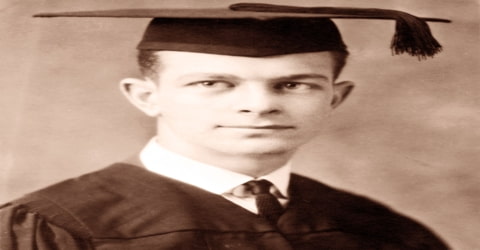
Linus Pauling, in full Linus Carl Pauling, was born on February 28, 1901, in Portland, Oregon, the U.S. to Herman Henry William Pauling, a bread salesman and Lucy Isabelle ‘Belle’ Darling. He was named “Linus Carl”, in honor of Lucy’s father, Linus, and Herman’s father, Carl. The family lived together in a humble one-room apartment. After his sister Pauline was born, the family moved to Salem, Oregon as his father took up a salesman job at the Skidmore Drug Company. During his younger days, he was a voracious reader and was also fascinated by chemistry experiments, he even set up a laboratory with the help of an older friend.
Linus Pauling was a shy but curious child. He collected insects and minerals as he wandered through the woods. He read continuously. His interest in science was apparently stimulated by his friend, Lloyd Jeffress, during his grammar school years. Jeffress kept a small chemistry laboratory in a corner of his bedroom, where he performed simple experiments. Pauling was intrigued by these experiments and decided to become a chemical engineer. Herman Pauling died in 1910 when Linus was nine. Linus did many odd jobs to help support his mother and sisters after his father died. He delivered milk, washed dishes, and worked in a machine shop. During high school Pauling pursued his interest in chemistry, performing experiments using the material he “borrowed” from an abandoned metal company, where his grandfather was a security guard.
His high school friend Lloyd Jeffress had a chemistry kit at home. Lloyd showed Linus some chemical reactions. Adding a drop of sulfuric acid to a mixture of potassium chlorate and sugar to produce water and carbon impressed Linus. He began to focus on chemistry and built his own laboratory in his home’s basement. By the time he was 15, Linus had the school credits he needed to enroll at Oregon State Agricultural College in Corvallis (now Oregon State University). Unfortunately his high school Washington High School, Portland refused to award him his high school diploma because he still needed two civics credits. Nevertheless, Linus left school, offering to pass the exams at college, but his high school said no to this. The school awarded him his diploma 47 years late, in 1963, after learning that their former student had won the Nobel Peace Prize.
In the fall of 1917, Linus Pauling entered Oregon Agricultural College (OAC), now Oregon State University, in Corvallis, Oregon. There he studied how the physical and chemical properties of substances are related to the structure of the atoms (basic units of matter) and molecules of which they are composed. A molecule is the smallest particles into which a substance can be divided and still have the chemical identity of the original substance. During his senior year, Pauling met Ava Helen Miller while teaching chemistry in a home-economics class.
In 1922, Pauling graduated from Oregon State University (known then as Oregon Agricultural College) with a degree in chemical engineering. He went on to graduate school at the California Institute of Technology (Caltech) in Pasadena, California, under the guidance of Roscoe Dickinson and Richard Tolman. His graduate research involved the use of X-ray diffraction to determine the structure of crystals. He published seven papers on the crystal structure of minerals while he was at Caltech. He received his Ph.D. in physical chemistry and mathematical physics, summa cum laude, in 1925.
Personal Life
On June 17, 1923, Linus Pauling married Ava Helen Miller and the marriage lasted until her death in 1981. They had four children. Linus Carl Jr. (born 1925) became a psychiatrist; Peter Pauling (1931-2003) a crystallographer at University College London; Edward Crellin Pauling (1937-1997) a biologist; and Linda Helen (born 1932) married noted Caltech geologist and glaciologist Barclay Kamb.
On January 30, 1960, Pauling and his wife were using a cabin about 80 miles (130 km) south of Monterey, California, and he decided to go for a walk on a coastal trail. He got lost and tried to climb the rocky cliff, but reached a large overhanging rock about 300 feet (90 m) above the ocean. He decided it was safest to stay there, and meanwhile, he was reported missing. He spent a sleepless night on the cliff before being found after almost 24 hours.
Linus Pauling was raised as a member of the Lutheran Church but later joined the Unitarian Universalist Church. Two years before his death, in a published dialogue with Buddhist philosopher Daisaku Ikeda, Pauling publicly declared his atheism.
Linus Pauling is the only person to win two undivided Nobel Prizes. This Nobel Peace Prize-winning scientist saved $200 dollars from all the odd jobs he did in order to fund his education but spent most of his hard earned savings on a girl named Irene, who he fell in love with at University. This scientist and Nobel Prize winner was denied a passport to London by the American government because he spoke publicly on the dangers associated with nuclear weapons.
Career and Works
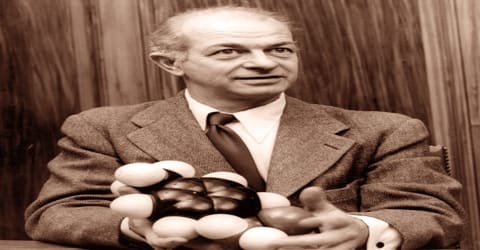
After completing postdoctoral studies, Linus Pauling returned to Caltech in 1927. There he began a long career of teaching and research. Analyzing chemical structure became the central theme of his scientific work. By using the technique of X-ray diffraction, he determined the three-dimensional arrangement of atoms in several important silicates and sulfide minerals. In 1929, Pauling published five rules which help to predict and explain crystal structures of ionic compounds. These rules concern (1) the ratio of cation radius to anion radius, (2) the electrostatic bond strength, (3) the sharing of polyhedron corners, edges and faces, (4) crystals containing different cations, and (5) the rule of parsimony. By 1929, he was promoted to associate professor, and by 1930, to full professor.
In 1930, he traveled to Europe to study the use of ‘electrons’ in ‘diffraction’ and after he returned, he built an instrument called the ‘electron diffraction instrument’ to study the ‘molecular structure’ of chemical substances. To complement the experimental tool that X-ray analysis provided for exploring the molecular structure, Pauling turned to quantum mechanics as a theoretical tool. For example, he used quantum mechanics to determine the equivalent strength in each of the four bonds surrounding the carbon atom. He developed a valence bond theory in which he proposed that a molecule could be described by an intermediate structure that was a resonance combination (or hybrid) of other structures. His book The Nature of the Chemical Bond, and the Structure of Molecules and Crystals (1939) provided a unified summary of his vision of structural chemistry.
In 1931, the American Chemical Society awarded Pauling the Langmuir Prize for the most significant work in pure science by a person 30 years of age or younger. The following year, Pauling published what he regarded as his most important paper, in which he first laid out the concept of hybridization of atomic orbitals and analyzed the tetravalency of the carbon atom.
In 1930 Pauling and R. B. Corey began to study the structure of amino acids and small peptides. Amino acids are organic acids that make up proteins. Peptides are compounds made up of two or more amino acids. On April 6, 1931, Pauling published the first major paper on this topic (“The Nature of the Chemical Bond”) and was awarded the American Chemical Society’s Langmuir Prize for “the most noteworthy work in pure science done by a man thirty years of age or less.”
In 1932, Pauling published a paper on the concept of ‘hybridization of atomic orbitals’ and analyzed the ‘tetravalency’ of the ‘carbon atom’. He introduced the concept of ‘electronegativity’ and established the ‘Pauling Electronegativity Scale’, a tool to predict ‘bond between atoms and molecules’. During World War II, he did not work on any military projects and refused to work in the ‘Manhattan Project’, a research and development project that produced the first atomic bomb. In the mid-1930s Pauling turned his interest to the structure of biological molecules.
In 1936 Pauling and C. D. Coryell discovered that the magnetic properties of hemoglobin (the protein in red blood cells that contains iron and carries oxygen) change upon being exposed to oxygen. These studies led to the 1949 proposal that humans may manufacture more than one kind of adult hemoglobin. Some hemoglobin tends to clump together and does not function properly when it is exposed to less oxygen. This is a disease called sickle cell anemia. This was the first documented instance of a “molecular” disorder.
In 1936, Pauling was promoted to Chairman of the Division of Chemistry and Chemical Engineering at Caltech, and to the position of Director of the Gates and Crellin Laboratories of Chemistry. He would hold both positions until 1958. Pauling also spent a year in 1948 at the University of Oxford as George Eastman Visiting Professor and Fellow of Balliol.
In 1939 Pauling released the twentieth century’s most important chemistry book, The Nature of the Chemical Bond. With its publication, he became the twentieth century’s greatest chemist. The ideas presented in the book and related papers are the primary basis upon which Pauling was awarded the Nobel Prize for Chemistry in 1954. The 1940s were a decade of significant change in Pauling’s life. While on a 1947 trip to Europe he decided that he would raise the issue of world peace in every speech he made in the future.
In 1946, Pauling became a member of the Emergency Committee of Atomic Scientists, an organization that warned the public of the hazards associated with the development of nuclear weapons. In November 1949, Pauling, Harvey Itano, S. J. Singer and Ibert Wells published “Sickle Cell Anemia, a Molecular Disease” in the journal Science. It was the first proof of a human disease caused by an abnormal protein, and sickle cell anemia became the first disease understood at the molecular level.
While serving as a visiting professor at the University of Oxford in 1948, Pauling returned to a problem that had intrigued him in the late 1930s the three-dimensional structure of proteins. By folding a paper on which he had drawn a chain of linked amino acids, he discovered a cylindrical coil-like configuration, later called the alpha helix. The most significant aspect of Pauling’s structure was its determination of the number of amino acids per turn of the helix. During this same period, he became interested in deoxyribonucleic acid (DNA), and early in 1953, he and protein crystallographer Robert Corey published their version of DNA’s structure, three strands twisted around each other in ropelike fashion. Shortly thereafter James Watson and Francis Crick published DNA’s correct structure, a double helix. Pauling’s efforts to modify his postulated structure had been hampered by poor X-ray photographs of DNA and by his lack of understanding of this molecule’s wet and dry forms.
In 1952 Pauling failed to visit Rosalind Franklin, working in Maurice Wilkins’s laboratory at King’s College, London, and consequently did not see her X-ray pictures of DNA. Frankin’s pictures proved to be the linchpin in allowing Watson and Crick to elucidate the actual structure.
In 1954 Pauling was the sole recipient of the Nobel Prize in Chemistry, “for his research into the nature of the chemical bond and its application to the elucidation of the structure of complex substances.” Pauling had no interest in the philosophical implications of quantum theory which fascinated Niels Bohr, Albert Einstein, and many other European physicists. He took a much more practical view: it works; it helps us understand chemistry, so we use it.
In 1955, along with fellow colleagues from the scientific community like Albert Einstein and Bertrand Russell, he signed the ‘Russell-Einstein Manifesto’, an appeal to seek peaceful resolutions and put an end to nuclear weapons.
In 1957 Pauling organized a petition calling for an end to nuclear bomb testing. In January of the following year, he presented this petition at the United Nations. Over eleven thousand scientists from all over the world had signed it. In 1958 he published his views on the military threat facing the world in his book No More War! Pauling’s views annoyed many in the scientific and political communities. He was often punished for these views. In 1952 the U.S. State Department three times denied him a passport to attend an important scientific convention in England.
In 1958, Pauling participated in the ‘Baby Tooth Survey’, that demonstrated the dangers of above-ground nuclear testing. The same year, along with his wife he presented the United Nations a petition signed by 11,000 scientists to end nuclear weapon testing. During the 1960s, he opposed America’s involvement in the Vietnam War, for this cause he made many public speeches and signed protest letters and petitions.
In 1960 Pauling was called upon to defend his actions regarding a test ban before a congressional subcommittee. By refusing to reveal the names of those who had helped him collect signatures, he risked going to jail a stand initially condemned but later widely admired. His work on behalf of world peace was recognized with the 1962 Nobel Prize for Peace awarded on October 10, 1963, the date that the Nuclear Test Ban Treaty went into effect. (See the video clip from his acceptance speech.)
In 1965, Pauling authored a research paper titled, ‘Close-Packed Spheron Model of the atomic nucleus’, which was published in some of the well-respected journals including ‘Science’. In 1970, his book titled ‘Vitamin C and the Common Cold’ was published. The book was about the benefits of the intake of Vitamin C. Pauling continued to work as a peace activist and in 1974, co-founded the ‘International League of Humanists’, an organization with the primary objective of promoting peace and human rights.
Pauling and his wife Ava helped to found the International League of Humanists in 1974. He was president of the scientific advisory board of the World Union for Protection of Life and also one of the signatories of the Dubrovnik-Philadelphia Statement of 1974/1976. Linus Carl Pauling was an honorary president and member of the International Academy of Science, Munich until the end of his life. Pauling supported a limited form of eugenics by suggesting that human carriers of defective genes be given a compulsory visible mark – such as a forehead tattoo – to discourage potential mates with the same defect, in order to reduce the number of babies with diseases such as sickle cell anemia.
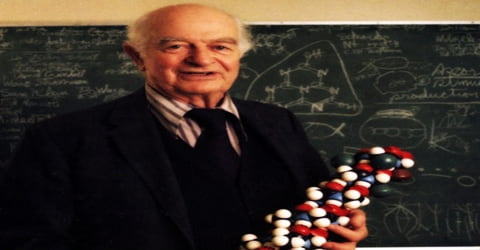
In 1986, Pauling authored another edition on the health benefits of vitamin C titled, ‘How to live longer and Feel Better’. The book advocated the intake of high dosages of Vitamin C’. In 1990, along with Daisaku Ikeda Seimei, he published In Quest of the Century of Life Science and Peace and Health.
Both Pauling and his wife developed cancer. Ava Helen Pauling died of stomach cancer in 1981. Ten years later Pauling discovered that he had prostate cancer. Although he underwent surgery and other treatments, cancer eventually spread to his liver.
Awards and Honor
In 1926, Linus Pauling was awarded a Guggenheim Fellowship to travel to Europe, to study under German physicist Arnold Sommerfeld in Munich, Danish physicist Niels Bohr in Copenhagen and Austrian physicist Erwin Schrödinger in Zürich.
In 1931, Pauling was awarded the Langmuir Prize by the American Chemical Society for the most significant work in ‘pure science’ by a person 30 years of age or younger.
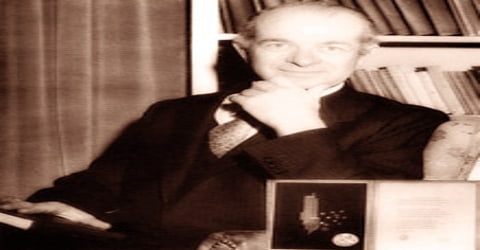
In 1954, Linus Pauling was awarded the Nobel Prize in Chemistry “for his research into the nature of the chemical bond and its application to the elucidation of the structure of complex substances.” For his peace activism, Pauling was awarded the Nobel Peace Prize in 1962. He is one of four individuals to have won more than one Nobel Prize (the others being Marie Curie, John Bardeen, and Frederick Sanger).
In 1970, Pauling was awarded the International Lenin Peace Prize.
The Pauling Centre for Human Sciences at the University of Oxford was named after Linus Pauling in honor of his contribution across both the sciences and humanities. Oregon State University completed construction of the $77 million, 100,000 square foot Linus Pauling Science Center in the late 2000s, now housing a bulk of Oregon State’s chemistry classrooms, labs, and instruments.
Death and Legacy
Linus Pauling died of prostate cancer on August 19, 1994, at 19:20 at home in Big Sur, California. He was 93 years old. A grave marker for Pauling was placed in Oswego Pioneer Cemetery in Lake Oswego, Oregon by his sister Pauline, but Pauling’s ashes, along with those of his wife, were not buried there until 2005.
Since his death, research continues on every aspect of his earlier discoveries, especially his theory about vitamin C and its effects on disease and the human body. His scientific career and work for world peace show us what a courageous imagination and approach can accomplish.
Published in 1939, his book ‘The Nature of the Chemical Bond’ is one of the most influential books ever published in the field of chemistry and it has been cited as a reference in many important journals and scientific papers. Pauling founded the concept of ‘molecular disease’; these discoveries inspired research work on many more such disorders and are the basis of today’s ‘human genome research’.
On March 6, 2008, the United States Postal Service released a 41 cent stamp honoring Pauling designed by artist Victor Stabin. California Governor Arnold Schwarzenegger and First Lady Maria Shriver announced on May 28, 2008, that Pauling would be inducted into the California Hall of Fame, located at The California Museum for History, Women and the Arts. The induction ceremony took place on December 15, 2008. Pauling’s son was asked to accept the honor in his place.
Information Source:
